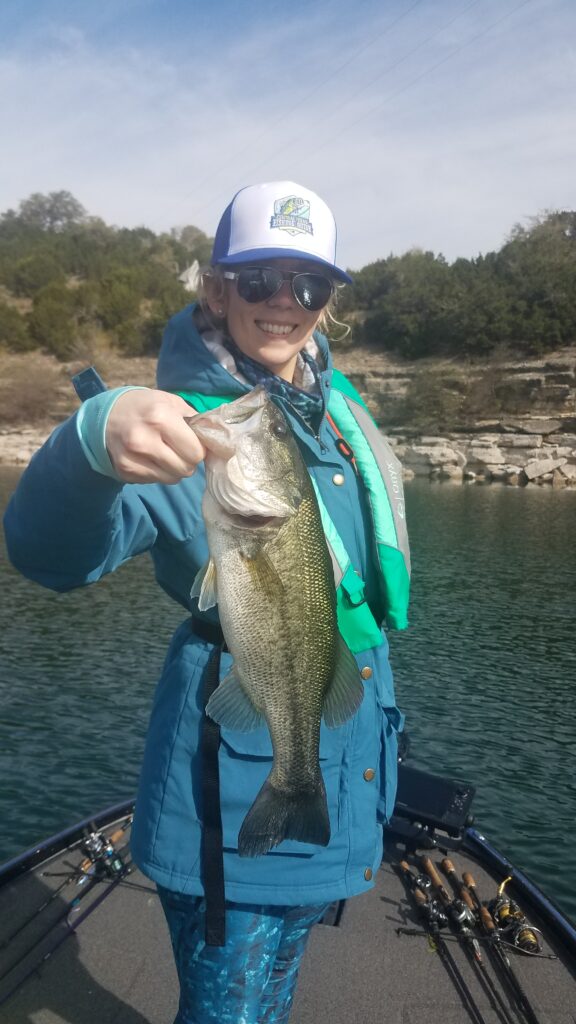
While many anglers are scouting the pockets and coves for bass beds, they often overlook some interesting bass behavior that is happening around the bed area. Even though the beds may be empty, and the bass have spawned in certain areas, the bass are still protecting the fry and are very aggressive towards their #1 predator and forage: bluegill! Bluegill love to feed on the bass eggs and newly hatched fry. You can see largemouth bass hiding around the spawning area and ambushing the bluegill as the come in to pray on the baby bass fry. It’s amazing to see just how fast these fish can move and how shallow they will run.
With the super clear water on Lake Travis, you really must make long casts into these areas, so you don’t spook the fish. In the same areas where I’ve been plowing through the brush with my boat to flip the beds, I’m staying in deeper water and making long casts to the very back of the brush lines. My go-to bait for the past few weeks has been the much-underrated tube! This is something I can throw on a bed if needed or I can cast to the clear shoreline waters and work it slowly back to the boat. I’ll drag the tube it along the bottom and hop it over the laydowns and brush that lies between the shoreline and the boat. 9 times out of 10 the tube gets smashed within a few feet of the shoreline!!
Don’t be afraid to make long casts over 50 feet of brush. I use 20-pound braid with a short 15-pound fluorocarbon leader and haven’t lost a fish yet. The brush on Lake Travis grew around 2011 to 2015 when the lake was in a drought. Collectively, they make for excellent shelter for baitfish and bass alike. However, they are very brittle and break apart easily when reeling in bass that just smashed the bait. After you set the hook, keep you rod tip high and get the bass in a quickly as possible. If the bass does manage to pull you down into the deeper brush just troll over to brush and the bass will usually come up along with the brush! I had a bass wrap my dropshot with a 12-pound fluorocarbon leader wrap me completely around some brush in 20 feet of water. I was able to push the brush up out of the lake bottom once I was directly over it. The bass was still on the other end too!
The top water bite is just around the corner, so check back soon for another fishing report focusing on how we are catching them on topwater and why we are fishing certain areas!